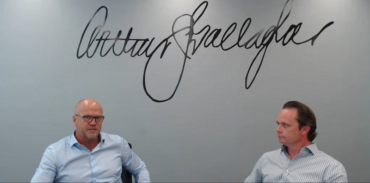Canada’s P&C insurance market remains vibrant but unpredictable, although there are signs of stabilization, a Gallagher executive said during an industry webinar Monday.
A variety of push-and-pull factors related to underwriting profits, reinsurance rates, interest rates and claims inflation, labour challenges, and catastrophes continue to create unpredictability in the market, said Gallagher’s president of western Canada and chief markets officer, Kevin Neiles. For example, underwriting profits are increasing and combined ratios are improving, but reinsurance rates remain a negative challenge, Neiles observed during the Gallagher Talks webinar session, 2023 and Beyond: Canadian Market Projections.
Neiles said a recent meeting he had with Louis Gagnon, CEO of Intact Financial Corporation’s Canadian operations, summarized the state of the market perfectly. “I asked him how he describes the marketplace and he says that, ‘It’s vibrant, unpredictable and he’s very glad to be a part of it,’” Neiles said.
“I think that’s a fair summary,” Dave Partington, CEO of Gallagher Global Brokerage–Canada, said at the webinar. “And I think the vibrancy right now is with new players coming in, [and] a lot of the existing players being far more open for business.”
Existing carriers may even get back into some areas from which they backed off of during the hard market cycle, Neiles added.

Two Gallagher senior executives discuss the state of the Canadian P&C insurance industry at Gallagher Talks.
Underwriting profits are a positive trend so far this year, Neiles noted. “We’re definitely seeing that the combined operating ratios are coming down….Indications from the first three quarters [of 2022] are that [combined ratios are] even better than they end[ed] up last year. There’s still time left in the year to see where those end up, but the trend seems to be positive.”
On the flip side, reinsurance rates are a negative trend. Insurers are “concerned that the rates will continue to be quite firm and they’ll be looking for increases, maybe some reduced capacity in certain areas,” Neiles said. “So, I would say that that will continue to be negative through the Jan. 1 renewals.”
Another factor, rising interest rates, will have a positive impact in the longer term, Neiles said. “The short-term impact of interest rates won’t hit their bottom-line earnings as soon, but in the long-term, it definitely is positive.”
The high-inflation environment, however, is negative for the industry. Increased costs to purchase materials and vehicles combined with delays adds to the business income loss, Neiles pointed out.
“The labour market at the moment is difficult, and it’s costly to employ people,” Partington added.
Skilled labour is important when it comes to construction, Neiles said. “Sometimes, it’s a matter of not even being able to get to jobs and again, that increases the business income loss.”
Catastrophe cover and the impacts of climate change are affecting the industry’s profitability, the speakers said. Post-tropical storm Fiona is anticipated to cost insurers at least $660 million in insured damage. That’s on top of the more than $875 million in insured losses from the derecho that struck Ontario and Quebec on May 21.
“Even just the new event descriptions, such as the ‘atmospheric river‘ that happened in British Columbia last year — nobody’s ever heard of that previously,” Neiles said. “The carbon footprint is having an impact and I know there’s a lot of attention being paid in a lot of businesses to how they can help to impact those things.”
Feature image by iStock.com/Fokusiert









